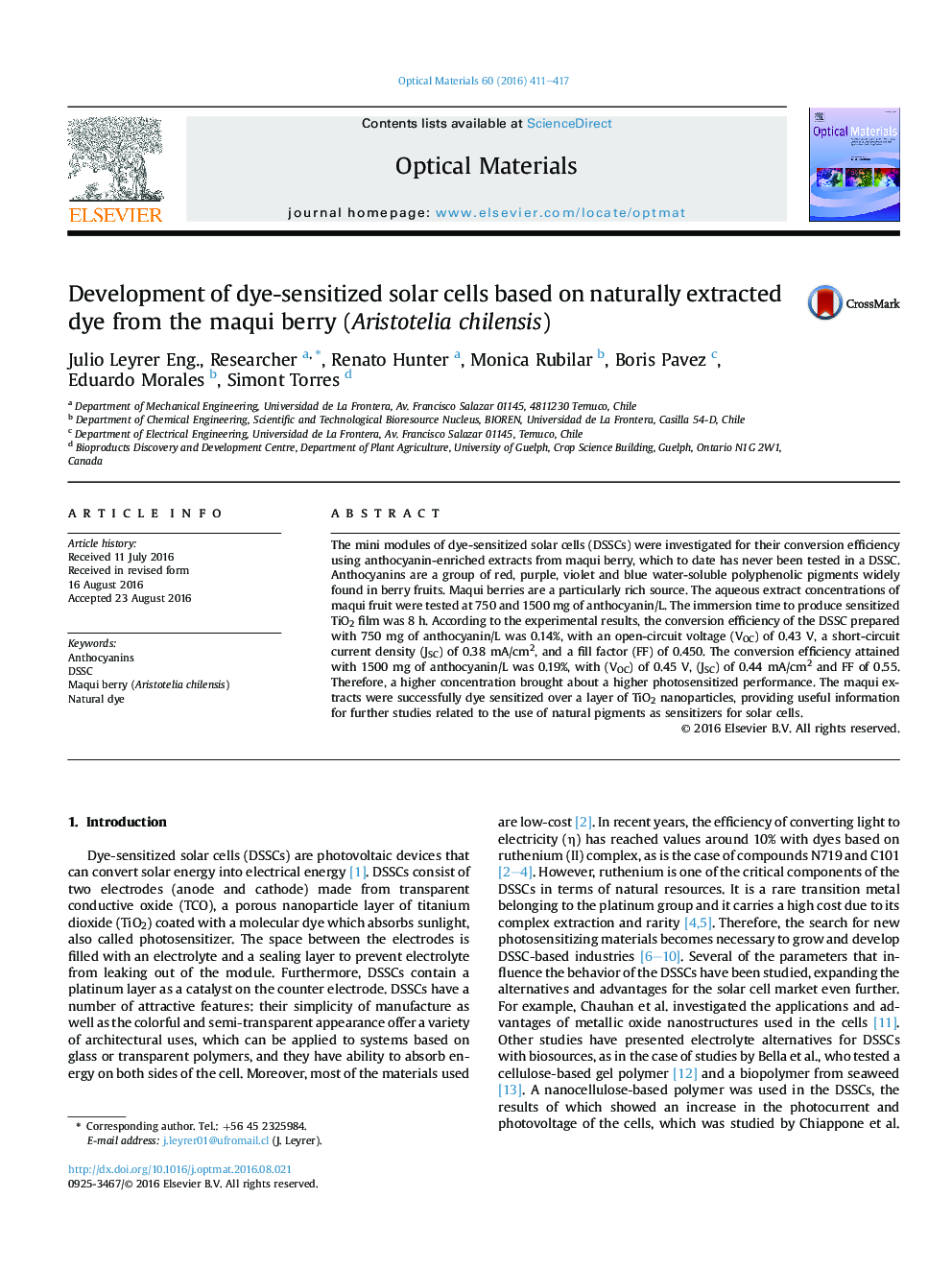| Article ID | Journal | Published Year | Pages | File Type |
|---|---|---|---|---|
| 1493239 | Optical Materials | 2016 | 7 Pages |
•Efficiency results of a DSSC using a new natural extract.•The anthocyanin of maqui composition by HPLC-MS and spectral characteristics.•Statistical analysis of the factors involved in the fabrication of the DSSC.•An assembly methodology for DSSC using a natural extract.•Direct relation between the anthocyanin concentration and performance of the DSSC.
The mini modules of dye-sensitized solar cells (DSSCs) were investigated for their conversion efficiency using anthocyanin-enriched extracts from maqui berry, which to date has never been tested in a DSSC. Anthocyanins are a group of red, purple, violet and blue water-soluble polyphenolic pigments widely found in berry fruits. Maqui berries are a particularly rich source. The aqueous extract concentrations of maqui fruit were tested at 750 and 1500 mg of anthocyanin/L. The immersion time to produce sensitized TiO2 film was 8 h. According to the experimental results, the conversion efficiency of the DSSC prepared with 750 mg of anthocyanin/L was 0.14%, with an open-circuit voltage (VOC) of 0.43 V, a short-circuit current density (JSC) of 0.38 mA/cm2, and a fill factor (FF) of 0.450. The conversion efficiency attained with 1500 mg of anthocyanin/L was 0.19%, with (VOC) of 0.45 V, (JSC) of 0.44 mA/cm2 and FF of 0.55. Therefore, a higher concentration brought about a higher photosensitized performance. The maqui extracts were successfully dye sensitized over a layer of TiO2 nanoparticles, providing useful information for further studies related to the use of natural pigments as sensitizers for solar cells.
